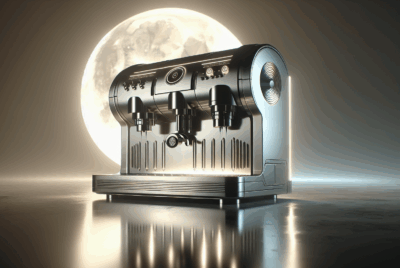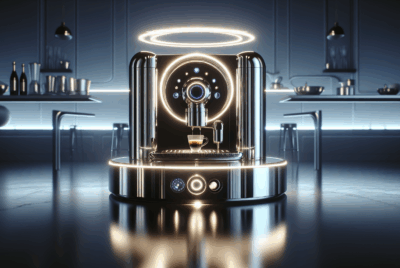Espresso Beans Unveiled: Exploring Flavors, Health Benefits, and More
As an Amazon Associate, I earn from qualifying purchases, at no additional cost to you. Disclaimer
Introduction To The World of Espresso Beans
Hello fellow coffee lovers! I’m ecstatic to embark on this caffeinated journey with you today. As an enthusiast and advisor in the world of espresso beans, I have some flavorful insights, suggestions, and tips to share with you. So let’s jump right into the enticing realm of espresso beans, shall we?
Understanding Espresso Beans
What Makes Espresso Beans Unique?
Espresso beans are not your run-of-the-mill coffee beans. The distinct flavor and aroma we associate with these little gems come from a unique combination of factors – the variety of the coffee plant, the region in which it’s grown, the process of harvesting and processing, and, importantly, the roasting process.
You see, espresso beans are typically roasted for a longer duration, which results in a darker, oilier bean. This long roasting process enhances the richness of the bean’s flavor and aroma, producing the robust taste that espresso is known for. Plus, the darkness of the roast contributes to the signature crema – the golden layer of foam that forms on top of a perfectly brewed espresso.
But the question is: can you use any coffee bean to make espresso? The answer is a resounding yes! What really matters is the grind size and the brewing process. So, while these dark, rich beans are often labeled as “espresso beans,” remember that you can venture outside the box!
Dark Roast vs. Light Roast
When it comes to the roasting spectrum, beans can range from light to dark roast, each with its unique flavor profile. Espresso beans are traditionally dark roasted, resulting in a bold, full-bodied flavor that stands up to the high-pressure brewing process of espresso.
Dark roasts are characterized by their deep brown, almost black color and a sheen of oil on the bean’s surface. They have a lower acidity, a heavy body, and tend to showcase more of the roasting process’s flavors rather than the bean’s inherent taste.
On the other hand, light roasted beans retain more of the original bean’s flavor characteristics, allowing the unique qualities of the specific coffee varietal and the region’s soil to shine through. These beans, roasted for a shorter time, have a more nuanced and brighter flavor profile.
While dark roasts are classic for espresso, don’t overlook light roasts. You might find yourself pleasantly surprised by the complexity and subtle flavors they bring to your espresso cup.
Medium Roast: The Middle Ground
And let’s not forget about medium roasts, the unsung heroes. They offer a balance between the intense flavors of dark roasts and the nuanced flavors of light roasts. With medium roast beans, you’ll find a balance of acidity and body, and a wide spectrum of flavors. They can make a great espresso, offering a balanced flavor profile that can be quite enticing.
Whether you lean towards dark, light, or medium roasts, the best part about the espresso journey is the experimentation. So go on, discover, and savor the delicious world of espresso beans.
Choosing the Best Espresso Beans
Single Origin vs. Blends
In your search for the perfect espresso bean, you’ll come across two broad categories: single origin and blends.
Single origin beans are harvested from a specific place – whether it’s a single farm, a small region within a country, or a particular country itself. These beans showcase the unique characteristics of their specific locale, allowing you to experience a distinct taste. Their flavor is influenced by the soil, altitude, climate, and cultivation practices of the region, making them a delightful way to taste the world from your espresso cup. From the fruity undertones of Ethiopian beans to the full-bodied robustness of Colombian beans, single origin offers a world of flavors to explore.
Blends, on the other hand, are a mix of beans from different origins. Master blenders skillfully combine beans with varying characteristics to create a balanced and complex flavor profile. The goal is to highlight the best of each bean and balance out any deficiencies. A well-crafted blend can offer a consistent flavor experience, which is often preferred for espresso.
Factors to Consider When Choosing Espresso Beans
Embarking on the quest to find the perfect espresso bean can be an exciting adventure. There are a few factors to consider that will guide your journey.
Freshness: Always check the roast date on the bag. Coffee beans are at their best within a month of their roast date, and for espresso, the fresher, the better. Freshly roasted beans will give your espresso a rich, full flavor that can’t be beaten.
Roast Level: Are you a fan of the rich, robust flavors of dark roast, or do you lean towards the bright, nuanced notes of a light roast? Or perhaps you’re a middle-of-the-road kind of person, preferring the balanced flavor of a medium roast. There’s no right or wrong answer – it all boils down to personal preference.
Origin: The geographical origin of the bean can greatly influence its flavor profile. Beans from Latin America are often balanced and fruity, African beans tend to be bright and berry-like, while Asian beans are typically full-bodied and earthy.
Variety: This refers to the specific species of coffee, with Arabica and Robusta being the most common. Arabica beans are often smoother and sweeter, while Robusta beans are typically stronger and more bitter.
Altitude: The altitude at which the coffee is grown can affect the taste. Coffee grown at higher altitudes tends to be denser and have more complex flavor profiles than those grown at lower altitudes.
The bottom line? Don’t be afraid to experiment. Try beans from various countries, different roast levels, and different producers.
Grinding Espresso Beans
Importance of Fresh Grinding
The moment coffee beans are ground, they begin to oxidize. Oxidation is the enemy of freshness, leading to a loss of flavor and aroma. That’s why it’s crucial to grind your beans right before you’re ready to brew your espresso.
Freshly ground espresso beans can significantly enhance the quality of your espresso. They preserve the beans’ flavor profile, leading to a richer, more robust, and overall better-tasting espresso. Remember, to enjoy the best espresso, grind on demand.
Having a good quality grinder at home can make a world of difference. Burr grinders, though slightly more expensive than their blade counterparts, provide a consistent grind size, which is critical in brewing the perfect espresso.
The Ideal Grind Size
Espresso requires a very fine grind. But how fine, you might ask? Think somewhere between powdered sugar and fine beach sand. An espresso grind should be fine enough to create resistance against the hot water passing through, but not so fine that it blocks the flow.
A proper espresso grind allows the water to extract the right balance of flavors. If your grind is too coarse, the water will pass through too quickly, resulting in a weak and under-extracted shot. If it’s too fine, the water will take too long to pass through, resulting in a bitter and over-extracted shot. The ideal grind will produce a shot of espresso that takes about 20-30 seconds to brew.
It might take a bit of trial and error to find the perfect grind size for your espresso. But trust me, your taste buds will thank you for your effort!
Keep in mind that not all beans are the same. The required grind size can vary depending on the type of bean and its roast level. Darker roasted beans are softer and may require a coarser grind, while lighter roasted beans are harder and may require a finer grind.
Investing in a Grinder
Investing in a good-quality grinder is a game-changer. While pre-ground coffee may seem convenient, it just doesn’t deliver the same freshness and flavor. If you’re serious about your espresso, consider purchasing a burr grinder. They provide a consistent grind, which is essential for extracting the maximum flavor from your beans. Plus, most grinders allow you to adjust the grind size, enabling you to fine-tune your espresso to your taste.
Grinding your espresso beans might seem like an extra step, but once you taste the difference, there’s no going back.
Espresso Beans: Exploring Popular Brands
Choosing the right espresso bean brand can be overwhelming, given the plethora of options available. Let me make this easier for you by sharing some popular and well-loved brands known for their exceptional quality and flavor profiles.
Lavazza Super Crema
Lavazza is a brand synonymous with Italian coffee. The Super Crema blend is one of their most popular offerings for espresso, as it delivers a creamy, full-bodied shot with hints of dried fruit and honey. The blend contains both Arabica and Robusta beans, creating a well-rounded flavor profile.
Illy Classico Espresso
Illy is another iconic Italian brand, revered for their commitment to quality. The Classico Espresso blend features 100% Arabica beans, offering a smooth, mild, and balanced flavor with notes of caramel and chocolate. This blend is perfect for those who appreciate a well-rounded espresso without any bitter aftertaste.
Blue Horse 100% Kona
If you’re looking for something a little more exotic, consider Blue Horse 100% Kona beans. Grown in the volcanic soils of Hawaii, these beans offer a unique taste that is smooth, sweet, and slightly fruity. It’s a single origin coffee, which means you’ll get to savor the unique characteristics of this specific region.
Death Wish Coffee
For those who prefer a stronger, bolder espresso, Death Wish Coffee might be your match. Reputed to be the world’s strongest coffee, their beans are dark roasted for an intense, robust flavor. Despite the strength, the coffee is surprisingly smooth, with subtle notes of cherry and chocolate.
Stumptown Coffee Roasters Hair Bender
Stumptown Coffee Roasters is a popular American brand known for their high-quality beans and ethical sourcing practices. Hair Bender is their most popular blend, crafted specifically for espresso. With a unique blend of beans from Latin America, Africa, and Indonesia, it offers a complex, sweet, and well-balanced flavor profile.
Keep in mind, these are just some of the many wonderful espresso bean brands out there. Remember that the best coffee is the one that suits your taste buds. Don’t be afraid to explore different brands, roast levels, and origins until you find your perfect match.
Understanding the Flavor Profile of Espresso
The Balance of Flavors
Espresso, a concentrated form of coffee, carries a complex flavor profile that is a delicate balance of sweetness, bitterness, and acidity. When prepared correctly, espresso has a rich, full-bodied taste with a creamy consistency.
The sweetness in espresso comes from the natural sugars in the coffee beans, which are caramelized during roasting. This sweetness is often associated with flavors reminiscent of caramel, chocolate, or even fruits.
On the other hand, the bitterness in espresso, which often carries flavors of dark chocolate or nuts, helps balance out the sweetness. A certain degree of bitterness is desired in a well-balanced espresso, but an overly bitter taste could mean the coffee has been over-extracted or the beans were over-roasted.
Acidity, often misinterpreted as a negative trait, is actually a highly desirable characteristic in espresso. A bright, crisp acidity can provide a counterpoint to espresso’s sweetness and add complexity to its flavor profile. It often manifests as fruity or citrusy notes.
Identifying Espresso Beans Tasting Notes
When you sip espresso, the first wave of flavor that hits your palate is known as the “tasting notes.” These are the distinctive flavors that set the coffee apart, often influenced by the bean’s origin, variety, and processing method.
For instance, espresso made from Ethiopian coffee beans might carry tasting notes of berries and wine, while Brazilian coffee might exhibit notes of nuts and chocolate. Tasting notes add another layer of depth and complexity to the espresso, making each sip an adventure for your taste buds.
The Role of Crema
Crema, the layer of creamy froth on top of an espresso shot, is not just there for aesthetics. It holds concentrated oils and sugars from the coffee and carries intense flavors. A well-extracted espresso should have a layer of smooth, thick crema. The crema’s color can range from a pale hazelnut to a dark brown, often indicating the freshness of the beans and the quality of the extraction.
Espresso Flavor Wheel
The espresso flavor wheel is a helpful tool for identifying and describing the complex flavors in your espresso. It breaks down the primary flavors (like fruity, floral, nutty, or spicy) into more specific notes, allowing you to articulate the unique taste of your espresso. It’s a fun exercise for coffee lovers, enhancing your appreciation of the intricate flavors of espresso.
Understanding the flavor profile of your espresso can greatly enhance your coffee experience. It’s fascinating to see how different variables – from the choice of beans to the brewing process – can affect the final taste. It’s a delightful journey of discovery, one that awakens your senses and deepens your love for coffee.
Health Benefits of Espresso Beans
High in Antioxidants
Espresso, like other types of coffee, is rich in antioxidants such as chlorogenic acid, melanoidins, and diterpenes. These antioxidants help combat oxidative stress, a leading contributor to chronic diseases like heart disease and cancer. Regularly consuming foods and beverages high in antioxidants may help protect against these diseases.
Boosts Memory and Concentration
Thanks to its caffeine content, espresso can boost cognitive function. Studies suggest that caffeine can enhance memory, alertness, and concentration, making you feel more awake and focused. It’s no wonder so many of us need that morning shot of espresso to kick-start our day!
Promotes Digestive Health
The high level of antioxidants in espresso may also promote a healthy gut. Research indicates that coffee consumption can influence the diversity and composition of gut microbiota, which plays a vital role in overall health.
Supports Heart Health
Moderate espresso consumption could be beneficial for heart health. Research suggests that drinking coffee in moderation may reduce the risk of heart disease. However, as espresso is a concentrated form of coffee, it’s important to moderate your intake to avoid potential negative effects of excessive caffeine.
May Help in Weight Management
Caffeine, a key component of espresso, has been found to boost metabolism and enhance fat burning in the body. Hence, moderate consumption of espresso may support weight management. However, remember to enjoy your espresso plain or with minimal additives, as adding sugar or cream can increase the calorie content.
Potential Protection Against Neurological Diseases
Emerging research suggests that regular coffee consumption might have protective effects against neurodegenerative diseases like Parkinson’s and Alzheimer’s. While more research is needed, these findings provide an intriguing link between our beloved espresso and brain health.
While espresso offers several health benefits, remember that moderation is key. Excessive consumption could lead to unwanted side effects such as restlessness, insomnia, or an upset stomach due to its high caffeine content. As with everything, enjoy your espresso responsibly.
Conclusion
So there you have it, a comprehensive guide to espresso beans. Whether you’re a novice or a seasoned espresso enthusiast, there’s always something new to learn and explore. Here’s to many more delightful espresso experiences!
Frequently Asked Questions (FAQs)
1. Are espresso beans and coffee beans the same?
Technically, espresso beans and coffee beans come from the same plant, but the term “espresso bean” refers to the roast of the bean and the brewing method.
2. Can I use any coffee beans to make espresso?
Yes, you can! While specific “espresso” beans exist, which are typically dark roasted, the espresso brewing process can work with any coffee bean.
3. How should I store my espresso beans to keep them fresh?
The best way to store your espresso beans is in an airtight container in a cool, dark place. Avoid storing them in the fridge or freezer, as the humidity can negatively affect the flavor.
4. What grind size should I use for espresso?
When it comes to espresso, you want a very fine grind. The grind size should be somewhere between powdered sugar and fine beach sand. If your grind is too coarse, your espresso will be watery and weak, and if it’s too fine, it can lead to over-extraction and a bitter taste.
5. What are some recommended espresso bean brands?
The best brand for you will depend on your personal taste, but some popular ones include Lavazza Super Crema, Illy Classico Espresso, and Blue Horse 100% Kona.





